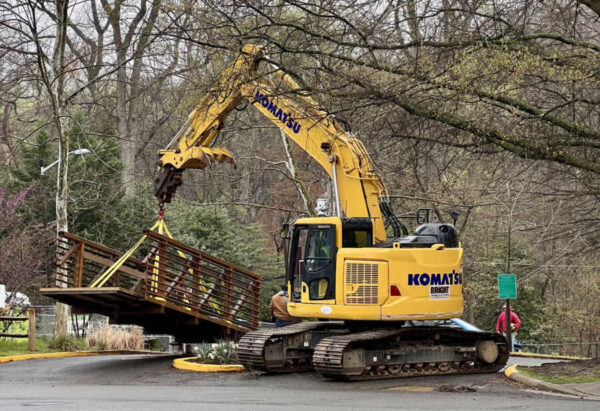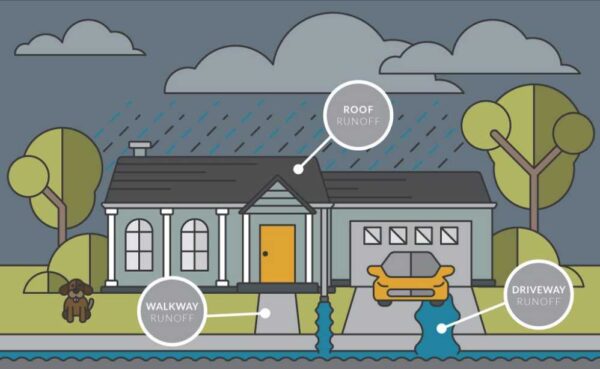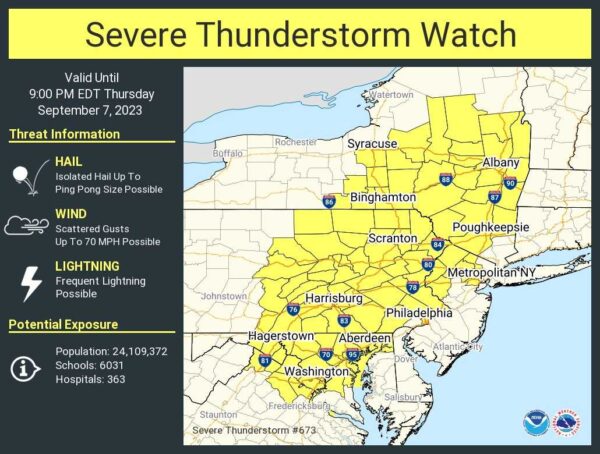Update at 3:40 p.m. — The severe storm for which forecasters issued a warning dropped sizable hail over a large swath of Arlington, from Pentagon City to Ballston to northern residential neighborhoods. While the warning is expiring, the earlier Severe Thunderstorm Watch (below) remains in effect.
More from social media:












